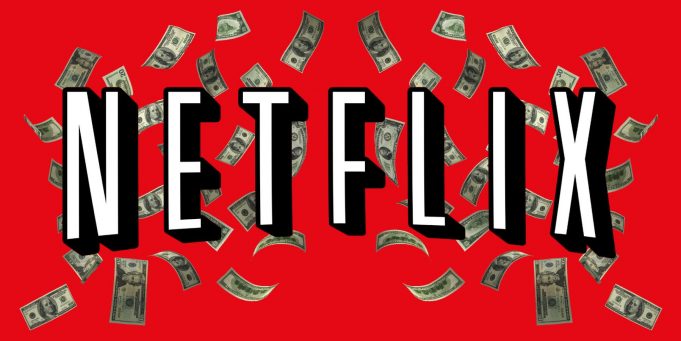Netflix is the world’s leading provider of streaming media delivering TV shows and movies over the Internet to its subscribers. Netflix subscribers can watch the streaming video content on nearly any of the Internet connected devices such as PCs, MACs, Smartphones, Tablets, Game consoles, Blu-ray players, television set-top boxes, and Smart TVs. In addition, in the United States, Netflix offers delivery of DVDs at home to its subscribers. Netflix generates revenues through the monthly membership fees for its content streaming services and DVD-by-mail services.
In the streaming business, Netflix offers three types of streaming membership plans that differ by the quality of the content offered and the number of screens that can access the content concurrently:
- the standard definition plan includes access to standard definition quality streaming on a single screen at a time.
- the high definition plan includes access to high definition quality streaming on two screens concurrently.
- the ultra-high definition plan includes access to high definition and ultra-high definition quality streaming over four screens concurrently.
In the DVD-by-mail business, the membership plans differ by the number of DVDs that a member may have out at any given point. Members can pay an additional surcharge to get access to high definition Blu-ray discs, in addition to the standard definition DVDs.
Content acquisition is an important part of Netflix business. Netflix obtains content from studios, distributors, and other suppliers through direct purchases, revenue sharing agreements, and license agreements. For content delivery, Netflix utilizes its own content delivery network (known as Open Connect) and third party content delivery networks. For DVDs delivery in the US, Netflix maintains a network of shipping centers for delivery and returns of DVDs.

Netflix Revenues 2014
Netflix has three operating segments: Domestic streaming, which refers to the content streaming business in the US; International streaming, which refers to the streaming business from countries other than US; and Domestic DVD, which refers to the DVD-by-mail services business in the US. In 2014, Netflix generated $5.5 billion of total revenues. Of these total revenues, Netflix generated
- $3.4 billion revenues, 62.3% of the total, from the domestic streaming business.
- $1.3 billion revenues, 23.8% of the total, from the international streaming business. The share of international streaming revenue increased from 8% in 2012 to 23.8% in 2014.
- $765 million revenues, 13.9% of the total, from domestic DVD business. The share of domestic DVD business declined from 31.5% in 2012 to 13.9% in 2014.
Note – Prior to July 2011, Netflix customers in the US could receive both streaming and DVD content under a single hybrid plan. That’s why the domestic streaming and the domestic DVD revenues data is not available separately for the years 2011 and earlier. In July 2011, Netflix introduced DVD only plans and separated the combined plans. This made it necessary for members to have two separate membership plans, if they wanted to receive both content streaming services and DVD-by-mail services.

Netflix Profits 2014
Of the $5.5 billion of Netflix total revenues in 2014, $3.8 billion were the cost of revenue. This resulted in $1.7 billion of gross profit and a gross margin of 31.8%. Netflix spent $607 million, $472 million, and $270 million on marketing, technology and development, and general and administrative expenses respectively. This resulted in $403 million of operating profit and an operating margin of 7.3%. After interest and other income/expenses and income taxes, Netflix had a net profit of $267 million and a net margin of 4.8%. Here are the definitions of Netflix’s key costs and operating expenses:
-
- Cost of revenue. This includes content expenses and other cost of revenue. For the domestic and international streaming segments, content expenses include amortization of the streaming content library and other expenses associated with the licensing and acquisition of the streaming content. For the domestic and international streaming segments, the other cost of revenue includes streaming delivery expenses, customer service, and payment processing fees. Streaming delivery expenses include equipment costs related to OpenConnect (Netflix’s content delivery network) and all third-party costs associated with delivering the streaming content over the Internet. Cost of revenues in the domestic DVD segment consist of delivery expenses, content expenses, including amortization of DVD content library and revenue sharing expenses, and other expenses associated with the DVD processing and customer service centers. Delivery expenses for the domestic DVD segment consist of the postage costs to mail DVDs to and from the members and the packaging and label costs for the mailers.
-
- Marketing. For the domestic and international streaming segments, marketing expenses consist primarily of advertising expenses and the payments made to the affiliates and device partners. Advertising expenses include promotional activities such as television and online advertising. Payments to affiliates and device partners include fixed fee and/or revenue sharing payments. Marketing expenses are immaterial for the domestic DVD segment.
-
- Technology and development. These consist of payroll and related costs incurred in making improvements to the service offerings, including testing, maintaining, and modifying the user interface, recommendation, merchandising, and streaming delivery technology, as well as the telecommunication systems and infrastructures. These also include the costs associated with computer hardware and software.
-
- General and administrative. These consist of payroll and related expenses for corporate personnel, as well as professional fees and other general corporate expenses. These also include the gain on disposal of DVDs.










